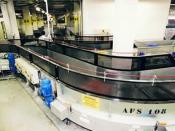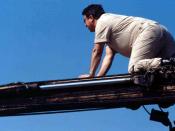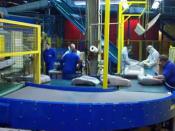Early in my engineering career, I learned the hazards of "clinging to the old paradigm". An individual (and a company) must quickly embrace new possibilities and initiate changes to improve worker safety. In 1997 I worked as a Senior Engineering Manager at a Canadian strip mine that was regarded as the least safe in the world. Early in my tenure, one of my workers was permanently disabled by an underground accident. Concern for worker safety became my highest priority. I began to investigate the cause of most accidents on our shaft and to contemplate possible preventive measures.
I immediately discovered a logistical problem: the workers going to and from the extraction field shared the same underground tunnel with the clay being transported to the surface. Although our safety regulations greatly reduced the chance of accidents, they still occurred. The close proximity of the fast traveling cars and the workforce in a narrow tunnel was a recipe for disaster.
Under the time pressures of our typical workload, we often neglected the regulations and risked fatal accidents. My proposed solution was to substitute a conveyor belt for the old rail cars, which continuously transports the clay to the elevator. The belt required less space in the tunnel and was much safer. Yet the change required a financial investment that management initially resisted. They were comfortable with their current method of doing business, maximizing output rather than safety.
Realizing the importance of my proposal, I became a strong advocate for the change. I initiated research to support the new method, gathered data and calculated the cost/benefit options. I explained my idea to people from different departments and secured their support. Driven by my commitment to worker safety, I presented a plan to management that maximized both output and safety. The new conveyer belt provided a continuous flow of clay to the elevator and increased the quantity of clay being transported. It also provided more space for the workers who traveled through the tunnel. My dedication to the plan ultimately convinced management that the change was in the company's best interest. We implemented the new system and I carefully monitored its acceptance.
My fulfillment from this success is bittersweet. I will forever regret that one of my workers was seriously injured on the job. I cannot change his fate or reverse his disabling injury. Yet as a manager, I used my skills and energy to prevent another life-threatening situation. I was proud to improve the working conditions for my employees and to be an advocate for safety.



